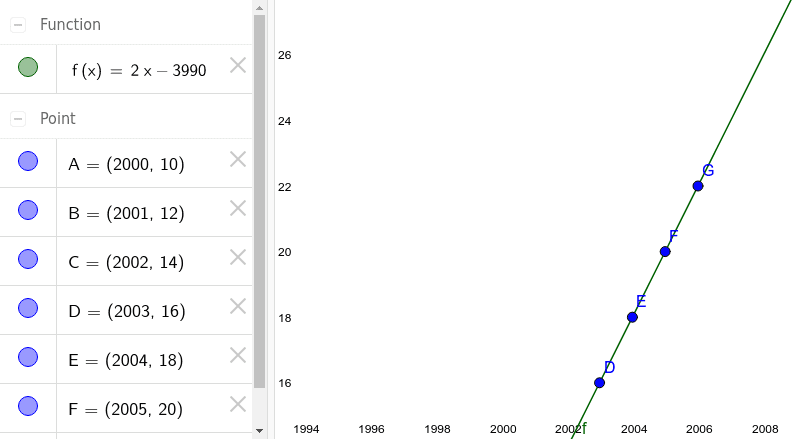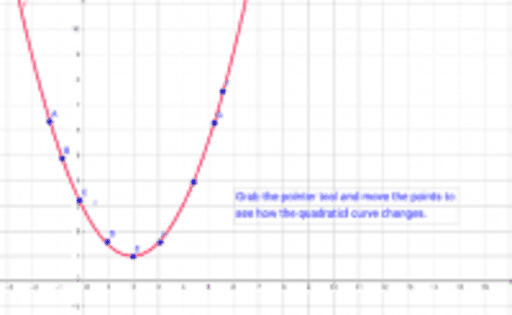

- #Regression line from data in geogebra classic software
- #Regression line from data in geogebra classic series
We used the conversion factor to obtain, from the GeoGebra database, four additional parameters of 50 mandibles.
#Regression line from data in geogebra classic series
The series of measurements, taken with two different methods (direct measurement using the caliper and conversion from GeoGebra output), showed a good degree of agreement. After image processing using GeoGebra, we calculated the conversion factor as the mean ratio between measures taken using GeoGebra and the caliper. We took photos of 25 mandibles of adult roe deer and at the same time measured mandible length and teeth row length using a caliper.

#Regression line from data in geogebra classic software
A method to convert values obtained from the GeoGebra software into biometric measures is described. Unlike classical biometry, which involves the use of a caliper for measurements, geometric morphometry acquires, through software, a series of reference points (landmarks) from digital photos, providing a series of linear measures. Study of dimensions (biometry) and shapes (geometric morphometry) of bone structures in ungulates is of extreme importance in wildlife population management. The obtained data can be very useful to assess both wildlife population status and its management. Therefore, the relationship among biometric parameters, animal and environmental features can be better studied.

The availability of this conversion factor enhances the numerousness of parameters into the classical biometric database, by means of the conversion of shape measures into size measures. Thus, we attempted to identify a conversion factor between shape and size analysis methods, using the mandible of adult roe deer as a bone model. Biometric surveys and analysis of the resulting cranial and body data are now crucial in management decisions and new possibilities of improving datasets should be considered. Thus, in the last decades, study of the sizes and shapes of structures in wildlife populations has been extensively investigated.

The wildlife expansion in the Italian Apennines caused a general development in hunting activities, together with the necessity of using biometry (size analysis) and geometric morphometry (shape analysis) as methods for monitoring the status of wildlife populations. The conversion factor is helpful to improve classical biometric databases to better clarify the relationship between environment and wildlife status. The analysis of variance showed that one parameter was significantly different between sexes (p = 0.04), demonstrating the usefulness of the measurement conversion.


 0 kommentar(er)
0 kommentar(er)
